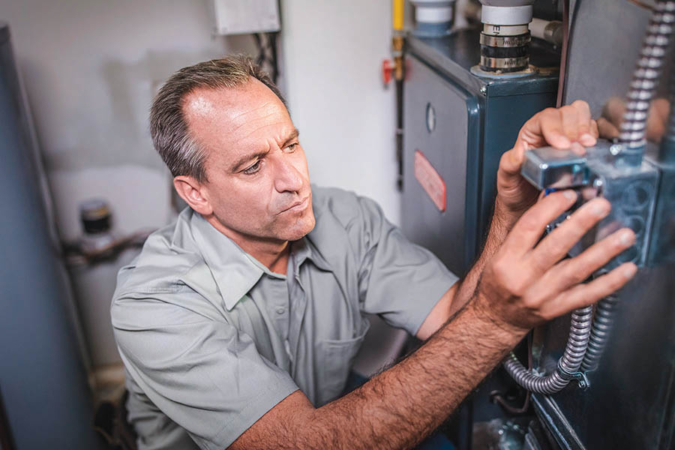Winter is a perfect time to think about renovations that bring coziness and warmth to your home. For homeowners who live off the natural gas line, propane is an earth-friendly option that can reliably and efficiently deliver warmer air all season long.
“When homeowners upgrade to propane during a remodel, they transform a dream home to include comfort and performance with high-efficiency appliances that have low-carbon footprints,” said Susan Kadilak, owner of Kadilak Homes, a construction, renovation and interior design firm. “Not only do families stay warmer with propane, they can feel better doing so because it’s clean energy.”
If you’re considering upgrades to bring more warmth to your home, start with these tips from Kadilak Homes and the Propane Education & Research Council:
* Do your research. Talk with your contractor about what you’re wanting to accomplish. Your local propane supplier is also equipped to help you navigate questions and find the right solution for your home.
* Think cozy. If your electric furnace is struggling to keep a room warm, consider upgrading to a propane furnace to get to your desired temperature more efficiently. Propane furnaces blow hotter air, which is more comfortable than the below-body-temperature air electric heat pumps produce. Propane furnaces also emit up to 50% fewer greenhouse gas emissions than electric furnaces, according to the 2018 Gas Technology Institute Report, so you can feel good about your impact on the environment.
* Make your home more efficient. As homes age, small cracks can develop around doors and windows and let cold air inside your home or allow warm air to escape. If the seals around the windows and doors are damaged, invest a few minutes to replace them and spend time caulking gaps. When your home is well-insulated, propane can efficiently keep your home toasty during chilly winter months.
Some of the most common clean energy heating upgrades homeowners request include fireplaces, furnaces and boilers.
Fireplaces
A roaring fire can be a focal point during the cold winter months. With 5-6 times the heating capacity of electric fireplaces, propane fireplaces are more energy efficient, environmentally friendly, convenient to use and easier to install than wood-burning models, Kadilak said. Some parts of the United States are banning wood-burning fireplaces due to their negative effects on the environment. Propane-powered fireplaces are an alternative that emit less soot and other air-polluting emissions. You can enjoy a toasty fire at the flip of a switch with no ash or soot to clean up and no firewood to store. Many models can also operate during electrical power outages, providing a critical source of heat to the home.
Furnaces
There can be a bone-chilling feeling when the furnace goes out in the middle of a cold winter. If your furnace is blowing cold air – or no air at all – it’s time for an upgrade. Before you buy, know propane-powered furnaces have 50% longer lifespans than electric heat pumps, which reduces their overall lifetime cost for homeowners. Propane furnaces also provide warmer air than other heat sources, at 120-140 F.
Boilers
While furnaces rely on forced warm air to heat dwellings, boilers use hot water or steam to raise temperatures in homes. High-efficiency propane boilers offer performance, space savings and the versatility to provide heating, hot water and snow melting. This versatility also extends to the type of heating delivery system propane boilers serve, including hydronic baseboard systems, in-floor hydronic systems or forced-air systems where the hot water from the boiler (instead of a furnace) acts as the heat source.
Learn how propane can help keep your home cozy, including where you can find a propane supplier in your area, at propane.com/KadilakFireplaces.
10 Winter Safety Tips for a Propane-Fueled Home
If your home uses propane to generate heat or run appliances, there are some simple steps you can take to help keep your family safe and avoid potential dangers this winter.
1. Make sure you have an adequate propane supply. Schedule regular winter visits with your propane supplier so you always have an adequate supply in your tank.
2. Mark the location of your tank with a flag, pole or stake. Ensure it is higher than the average snow cover depth for your location. These markers can help you avoid plowing or shoveling rooftop snow on top of your tank. Should your tank become covered with snow, use a broom to clear it.
3. Make sure your heating system and appliances are running efficiently. Before the start of each heating season, have a qualified service technician inspect and service your appliances and propane system. This can help ensure your appliances are running as efficiently as possible.
4. Create an emergency preparedness plan and review it with everyone in your family. Post a list with contact information for your propane supplier and emergency services along with instructions for turning off propane, electricity and water. If you need to turn off your propane, contact a service technician to inspect your propane system prior to turning it back on.
5. Prepare a family disaster supply kit. Include several days’ worth of water and canned foods, along with a can opener, extra clothes, blankets, flashlights and batteries. Also include a battery-powered weather radio so you can stay informed as conditions change.
6. Check your chimneys, flue pipes, vent connectors and propane tank for damage, blockage or debris caused by snow and ice. Use a broom rather than a shovel and clear these areas frequently to help reduce the possibility of carbon monoxide poisoning.
7. Consider installing UL-listed propane gas detectors and carbon monoxide detectors. These detectors can provide you and your family with an additional measure of security. Be sure to follow the manufacturer’s instructions regarding installation, location and maintenance.
8. After a storm passes and it is safe to do so, check the entire area for downed power lines, damaged gas lines or damage to your propane tank. Immediately call your local utility company or propane supplier if any of these hazards exist. Do not attempt repairs yourself.
9. Never use a stove for space heating and never use outdoor propane appliances indoors or in enclosed areas, particularly in the event of a power outage. Proper ventilation is necessary for safe operation, and the carbon monoxide fumes can be lethal. Only use appliances indoors that are designed and approved for indoor use. Never store, place or use a propane cylinder indoors or in an enclosed area.
10. Conserve energy. Keep thermostats at 65 F during the day and 55 F at night, and close off any rooms that don’t need to be heated. (Family Features & Propane Education & Research Council)




